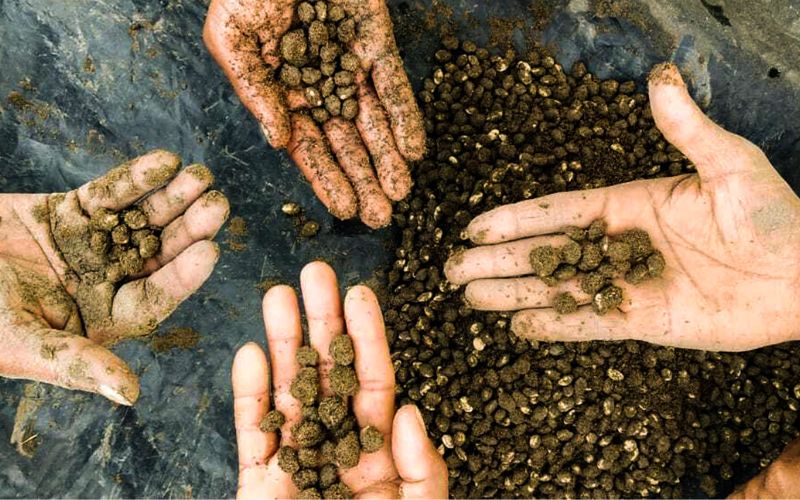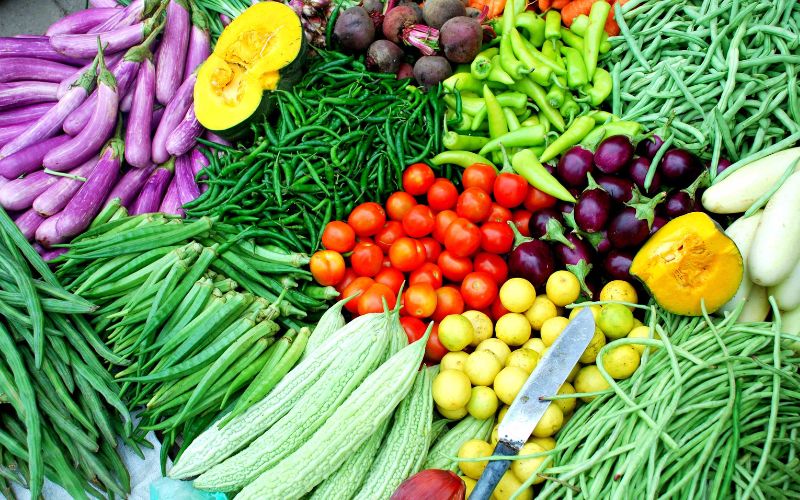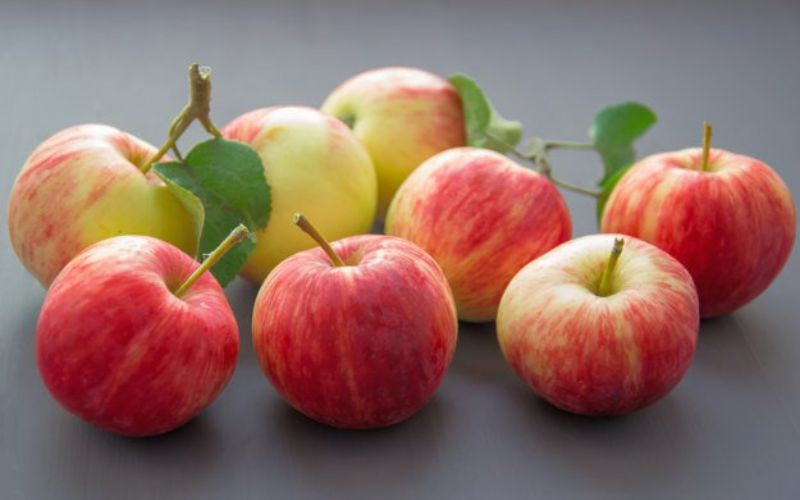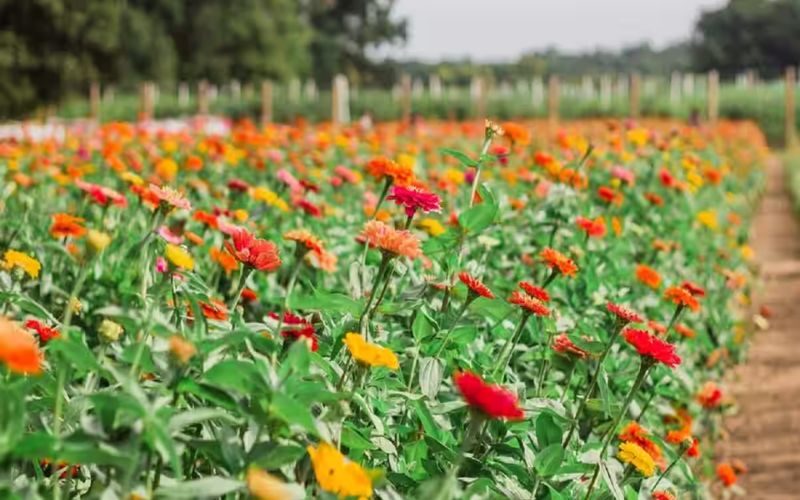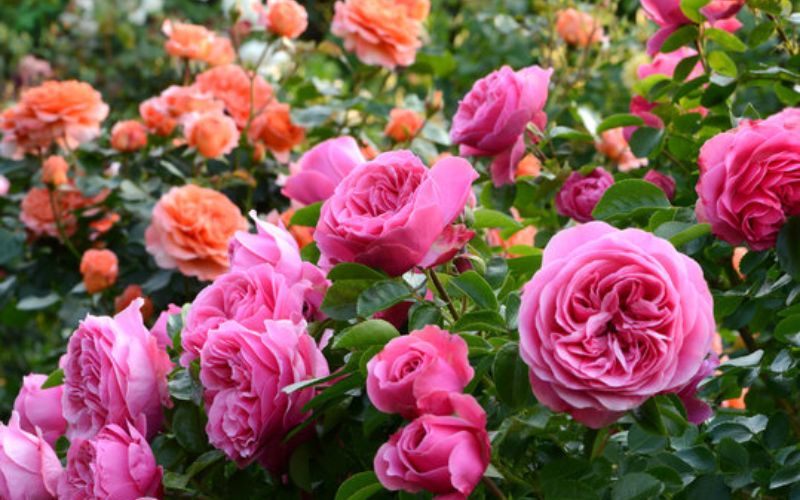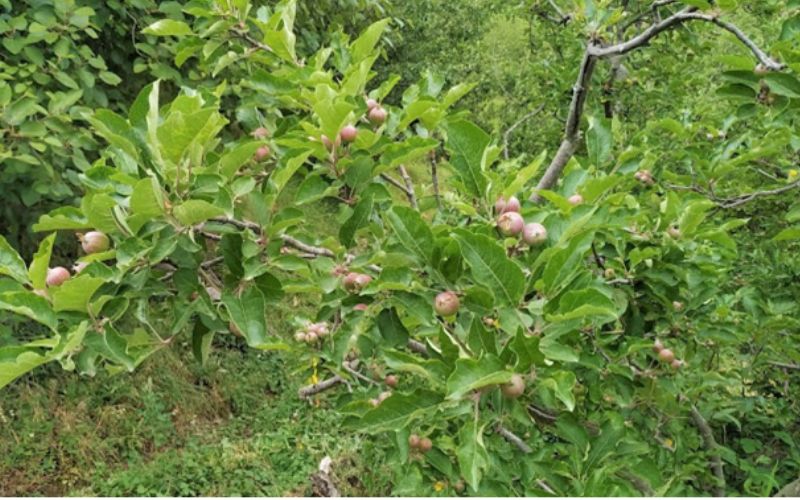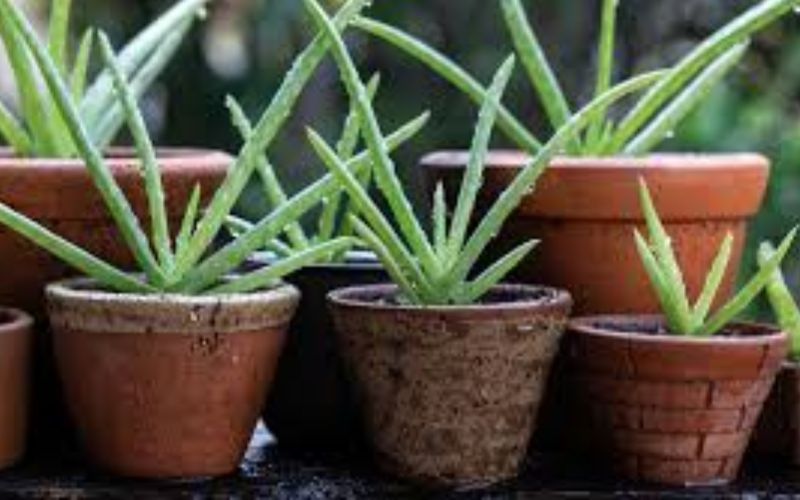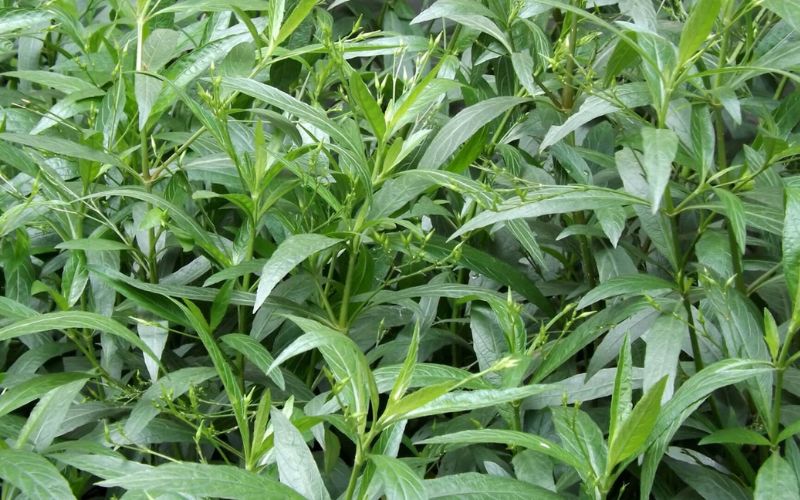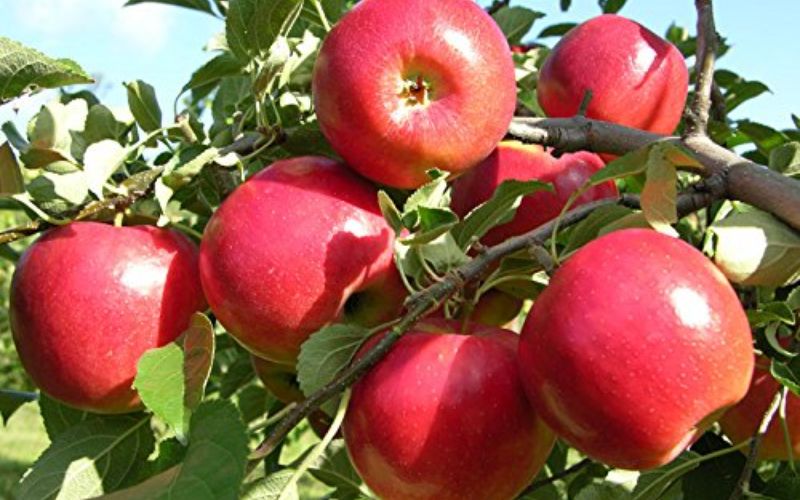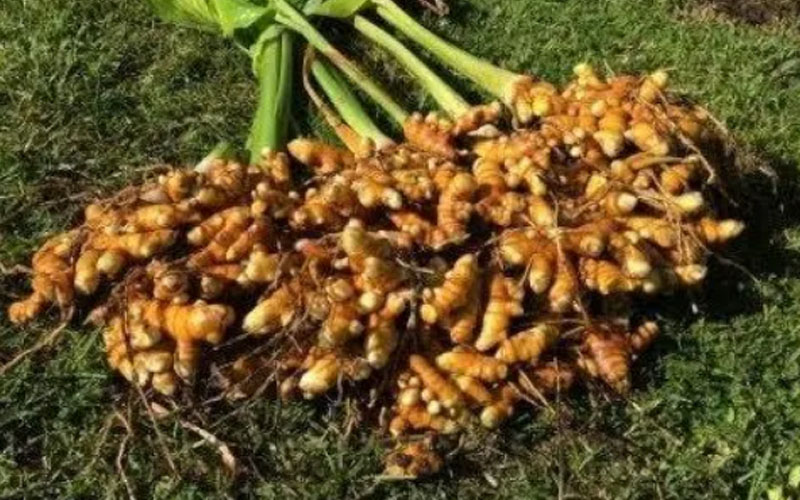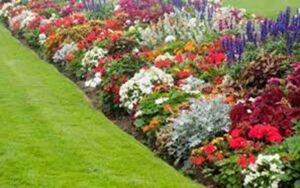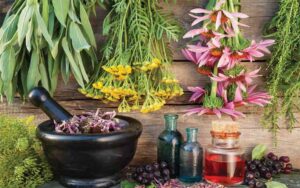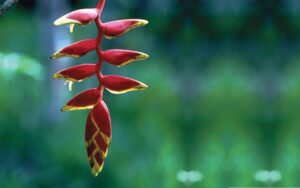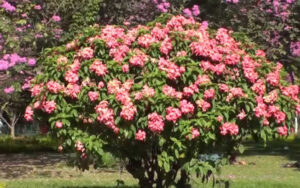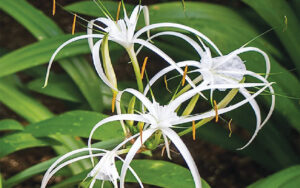Haldi: An important medicine in Ayurveda
Dr. Amar Singh
Former A.Chief technical officer
I.A.R.I., New Delhi
ABSTRACT:
Turmeric is the dried rhizome of Curcuma longa, an herbaceous plant. Depending upon the Turmeric variety, a rhizome has 1.8-5.4% curcumin, the pigment and 2.5-7.2% of essential oil. It is used as an important condiment and as a dye. Turmeric finds application in drug and cosmetic industries. It has anti-inflammatory, anti-oxidant and disease-fighting qualities. Turmeric is a perennial herb, native of south Asia. It is also known as ‘Indian Saffron’. Leaves are long, broad and of bright green color. Flowers are of pale yellow color. India is world’s largest producer, consumer and exporter of Turmeric. In India, Andhra Pradesh is the leading state followed by Maharashtra, Tamil Nadu, Gujarat, Orissa, Kerala and Bihar.
Introduction
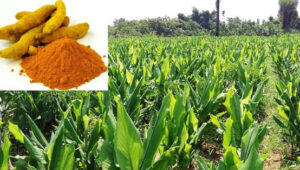
Turmeric (Turmeric) is an Indian plant. It is a 5 to 6 feet tall plant of the ginger species, in which turmeric is found in the root nodules. Turmeric has been recognized as a miraculous sight in Ayurveda since ancient times. Apart from turmeric, it has been given the names Haridra, Curcuma Longa, Gauri Vatta Vilasani, Kumkum. Turmeric is considered an important medicine in Ayurveda. It has an important place in the Indian kitchen. Religiously it is considered very auspicious, so turmeric ceremony has a special significance in marriage.
Latin name: Curcuma longa
English name: Turmeric
Family name: Zingiberaceae
Although long used in Ayurvedic medicine, where it is also known as Haridra, according to the US Food and Drug Administration, it is not recommended to use turmeric or its component, curcumin, to treat any disease. There is no high-quality clinical evidence for Turmeric acts as an antiseptic. Turmeric is the main spice crop of India. It has the first place in area and production॰ It is used daily in our food, it has a main place in all religious works. Turmeric has many medicinal properties. It is also used in medicine and cosmetics. India receives foreign exchange worth crores of rupees from exports.
Climate
Turmeric is cultivated in tropical and sub-temperate climates. Hot and dry during crop growth humid climate is suitable but cold 25-30 degree Celsius at the time of knot formation.
Crop Duration
Depending upon the variety, the crop becomes ready for harvest in 7-9 months after planting during January-March. Early varieties mature in 7-8 months, medium varieties in 8-9 months and late varieties after 9 months.
Varieties:
Roma, Suroma, Saguna, Sudarshan, Prabha, Rashmi, B.S.R. Pratibha, Palam Pitamber, Palam Lalima Haldi, Coimbatore, B.S. R. -1, (BRS-1), Savarna, Suguna Sudarshan, Rajendra Sonia, R.H. 5, R.H. 9/90, R.H. 13/90, megha-1,2 and NDR-18 etc.
Land preparation
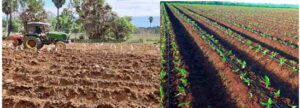
Well drained sandy loam to light loam soil for high yield of turmeric is suitable. Its lumps are formed inside the ground, so turn the soil twice with disc plow and plow three to four times with indigenous plow or Rotavator/cultivator to make the soil loose and level.
Manure and fertilizers
It is beneficial to treat the following amount of manure and fertilizers for one hectare area.
Rotten compost / cow dung manure: 250 to 300 quintals
Nitrogen: 100 to 150 kg
Phosphorus (Spur): 50 to 60 kg
Potash: 100 to 120 kg
Zinc sulfate: 20 to 25 kg
Plow the field by sprinkling it with rotten cow dung manure or compost 15 to 20 days before transplanting. Phosphorus, Potash and Zinc Sulphate mixed well in the field a day before sowing/planting॰ Give Nitrogen fertilizer should be divided into three equal parts, the first part should be given after 40 to 45 days of transplanting, the second part after 80 to 90 days and the third part after 100 to 120 days.
Transplanting/sowing method
Time of sowing
To get higher yield, complete rhizome sowing in field by April end. It is also raised by transplanting method, for that rhizome transplantation should be completed within first fortnight of June. For transplanting 35-45 days old seedling is used.
Method of sowing
Direct sowing and transplanting method is used for planting.
Sowing distance and seed quantity
Rhizome of 30-35 grams are suitable for sowing turmeric 30 cm from row to row and
Tuber to tuber distance 20 cm. and planting should be done at 5-6 cm depth. 2.5 gm of Indofil M-45 or 1.0 gm of bavistin per liter of water solution should be made before sowing the crop and the tubers should be treated for 30-45 minutes .After transplanting or sowing, cover the fields with green rosewood leaves (5 cm thick layer) to prevent the Weed .
Hoeing weeding
Do three weeding in turmeric. First weeding after 35-40 days, second after 60 to 70 days and third after 90 to 100 days, earthen up should be done around the roots of the plants at the time of each weeding.
Irrigation:
Turmeric is produced in the rainy season, so irrigation is not required in this crop. Whereas in case of not raining on time, irrigation must be done as per requirement.
Pests and Diseases Control
Some information on insects, pests and disease of Turmeric is discussed below. The control measures depend upon type and intensity of the problems and also whether organic or inorganic pesticides are to be used as decided by the expert.
Pests
Thrips
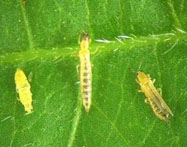
Thrips can be controlled by spraying Dimethoate 30 EC or Methyl demeton 25 EC 2 ml/litre.
Rhizome scale
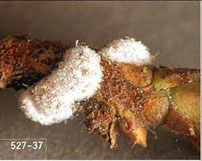
Rhizome scale can be controlled by applying well rotten sheep manure @ 10 t/ha in two splits (once basally and other at earthing up) or Poultry manure in 2 splits followed by drenching Dimethoate 30 EC 2 ml/lit or Phosalone 35 EC 2 ml/lit.
Nematode
Avoid planting turmeric after Banana or other solanaceous vegetables. Plant only after taking suitable control measures. Apply Carbofuran 4 kg a.i. /ha twice on the third and fifth month after planting the rhizomes.
Diseases
Rhizome rot
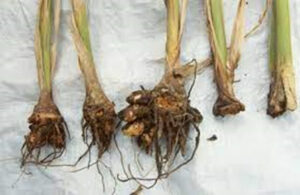
Rhizome rot
- Treat the seed rhizomes with 0.3% Copper oxychloride for 30 min or Drench with Bordeaux mixture 1 % or Copper oxychloride 0.25 % or Ridomil 0.1 % or
- Seed treatment with P. fluorescens 10 g/kg and T. viride 4 g/ Kg and soil application of 2.5 Kg/ha each of P. fluorescens and T. viride in 50 kg of FYM as basal and top dressing on 150 Days after planting.
Leaf spot
Leaf spot can be controlled by spraying Carbendazim 500 g/ha or Mancozeb 1 kg/ha or Copper oxychloride 1.25 kg/ha.
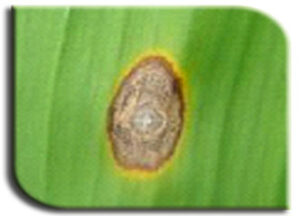
Leaf blotch
Leaf spot controlled by spraying Carbendazim 500 g/ ha or Mancozeb 1kg/ha or Copper oxy chloride 1.25 kg/ha. Mix sticker solution @ 5ml / 10 litre of spray solution
Harvesting:
Depending upon the variety, the crop becomes ready for harvest in 7-9 months after planting during January-March. Early varieties mature in 7-8 months, medium varieties in 8-9 months and late varieties after 9 months.
The land is ploughed and the rhizomes are gathered by hand picking or the clumps are carefully lifted with a spade. The harvested rhizomes are cleared of mud and other extraneous matter adhering to them.
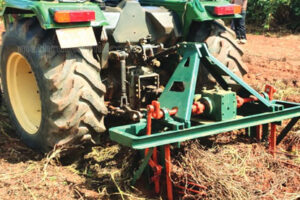
Turmeric digger
Yield:
The yield of turmeric depends on the variety and methods of production. Average yield of turmeric 250 to 300 quintals per hectare
In India, at various places different methods and equipment are used, but basic method is mentioned below in a process flow sheet.
Processing of Turmeric
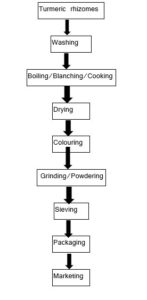
Washing:
At first rhizomes are separated after digging out from the soil and these are washed, so that particles of soil, spray residues and unuseful particles attached with the rhizomes are removed. For this rhizomes are kept soaked in water throughout the night. Later on rhizomes are taken out and water is sprayed. This process can be achieved by soaking and spraying equipment. Spraying is done at low pressure and wide angle jet or with high pressure jet. At the time of washing rhizomes are divided in two parts. First part from middle is called mother rhizomes. The second part of it which is long and thin is called Doctor Rhizome. Mother rhizome is kept for seed while Doctor rhizomes are further processed and sold.
Boiling
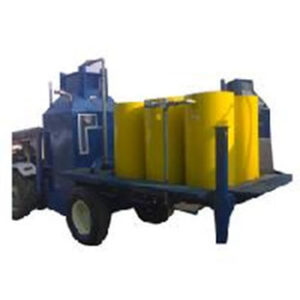
Boiler machine
The next step of processing is boiling or blanching. Traditionally boiling is done in metal or mud pots alongwith ¾ water. Top of the pots are covered with a lid or dry leaves. Boiling process is continued till foams and white foams start coming out. These come out with a special quality of flavour. Rhizomes are tested by pressing with fingers. If rhizomes are soft and inner colour has become yellow instead of red then this process is said to be complete.
By using developed method of boiling or blanching both colour and quality are improved. Time taken is less. In the developed method bulbs are treated with 0.1% Soda (Sodium Carbonate, Sodium bicarbonate or Ammonium Carbonate) and water solution. The time required for this process is 30 minutes to 6 hours. Boiler is used in the developed method which is metal kettle open from the top. Soda solution is filled in it and it is heated from the bottom by electric heater or fuel oil. Perforated frame loaded with turmeric tubers or bulbs are sunk here. Water from all sides of perforations enters inside making turmeric tubers soft. After 30 or 40 minutes bulbs/tubers are taken up and tested alongwith the frame.
Drying
Cooked rhizomes are cooled first and spread slowly in the yard for drying. It takes at least 10 to 15 days for drying in the sun. Tubers are brought up and down in the middle of drying so that all are dried well. Mother rhizome takes comparatively more time while Doctor rhizome dries up quickly. Therefore these are dried separately also. After drying these become hard and solid. Completely dried turmeric holds 6% moisture content.
Polishing
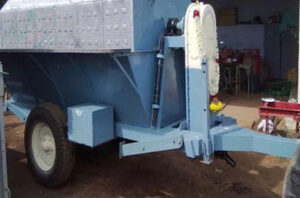
Turmeric polisher
Dried rhizomes are rubbed against ground or below the foot to take out the hard layer over them and small roots are removed. By this process colour of turmeric becomes bright or shining. Later on removed roots, light garbage and thin layerings are cleaned.
Machine is also used for polishing. For this a drum having 0.9m diameter and 0.6m length is used. It is kept horizontally on a shaft and operated by a handle. Average capacity of this machine comes to 32kg per batch. Dry turmeric 32kg approx.is filled and polishing is done at least for 7 minutes. During this period water is also sprinkled which causes improvement in the colour of turmeric.
Colouring
Exporting turmeric is given special colour by mixing yellow so that powder and processed materials can give better look and quality. Cleaning is done by two methods. One is dry colouring and the other wet colouring. In the first process dry powder of yellow colour is sprayed on boiled turmeric and rightly mixed. Powder is known as middle crome. In the wet colouring process its solution is prepared in water which is sprayed on rhizomes and mechanically mixed. After colouring is complete for one week these are dried. Later on these rhizomes are kept in sacks and closed for exporting.
Grinding or Powder making
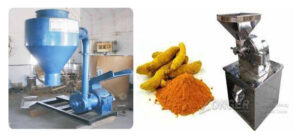
Grinding and Powder making unit
Traditionally dried and polished turmeric are cut into pieces and beaten in mortar and pestle. After this is milled or ground with hand operated chakki. Hammer mill is also used for grinding. Powder should be so fine that it passes through 300 micron sieve and nothing is left over the sieve.
Sieve: The ground spices are sorted by size through a sieve, and the larger particles can be further ground. Commonly used screens are of 60 – 80 mesh size.
Packing:
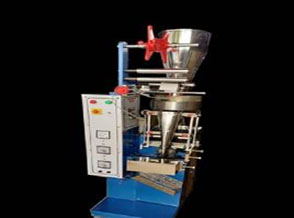
Turmeric packing machine
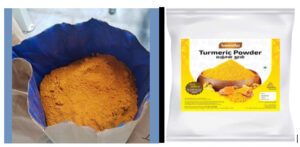
Turmeric powder packaging
Turmeric powder is packaged in packaging materials that deal with common deterioration factors of turmeric powder, such as hygroscopicity, loss of aroma/taste, discoloration, insect infestation, and microbial contamination. The volatile oils present in the spice product have a tendency to react with the inner/contact layer of the packaging material, leading to a greasy and messy package, sometimes with staining of the printed material. Therefore, the packaging material must be resistant to oil and grease and must be compatible with the product. For bulk packaging, Flexible Intermediate Bulk Containers (FIBCs) with a capacity of up to 1 tone are commonly referred to as jumbo bags. For institutional packages, materials such as laminated flexible pouches and plastic woven sacks are used. In case of retail pack, PMFME DPR on Processing of Turmeric Powder are the most common forms with printed flexible pouches (pillow type, gusset type and stand-up pouch) and lined carton material, such as polyester / metallized polyester / LDPE, BOPP / LDPE , BOPP / Metallised Polyester / LDPE, Polyester / LDPE. These technologies are available to the farmers of the area to process their turmeric rhizomes and receive training, incubation and hand holding for production and processing as a module under the project. Progressive farmers are receiving training and then going through business incubation before entering the business.
Certification
The methods of processing under organic farming should also be based on mechanized. Physical and biological processes to maintain the vital quality of the organic components at each stage of its processing. All ingredients and additives used in processing must be of agricultural origin and certified organic. In cases where a component of organic when agricultural origin is not available in sufficient quality or quantity, the certification program authorizes the use of non-organic raw materials, subject to periodic re-evaluation. Labeling must clearly indicate the biological status of the product as “product of organic agriculture” or a similar description when the requirements of the standards are met. Also organic and inorganic products should not be stored and transported together, unless labeled or physically separated. Certification and labeling is usually carried out by an independent body to provide a guarantee that production standards are met. Government of India has taken steps for indigenous certification system to help small and marginal producers and issue valid organic certificates through certification agencies recognized by APEDA and Spices Board. Inspectors appointed by the certification agencies will oversee the form operations through maintaining records and conducting periodic site inspections. Documentation of agricultural activities is necessary to obtain certification, especially when both conventional and organic crops are grown. Group certification programs are also available to be conducted.
Nutritional Value of Turmeric:
There are more than 100 components present in turmeric. The major component present in the root is a volatile oil consisting of turmerone. Other colouring agents like curcuminoids are also present in turmeric. Curcuminoids contain curcumin demethoxycurcumin, dihydrocurcumin, and 5-methoxycurcumin, which are natural antioxidants. Turmerone, arturmerone, and zingiberene are the components responsible for the aroma of turmeric. Turmeric also contains a great amount of Ï-3% fatty acid and α-linolenic acid (2.5%).
In 100 grams of turmeric, the nutrients found are:
| Nutrient | Value |
| Energy | 312 Kcal |
| Fat | 3.25 g |
| Carbohydrate | 67.1 g |
| Protein | 9.68 g |
| Total dietary fibre | 22.7 g |
| Glucose | 0.38 g |
| Sucrose | 2.38 g |
| Fructose | 0.45 g |
| Magnesium | 208 mg |
| Iron | 55 mg |
| Potassium | 2080 mg |
| Phosphorous | 299 mg |
| Zinc | 4.5 mg |
| Sodium | 27 mg |
| Copper | 1.3 mg |
| Manganese | 19.8 mg |
| Vitamin C | 0.7 mg |
| Selenium | 6.2 µg |
| Riboflavin | 0.15 mg |
| Niacin | 1.35 mg |
| Thiamin | 0.058 mg |
| Vitamin B-6 | 0.107 mg |
Table: Nutritional value of turmeric
Uses of Turmeric
Use of turmeric Apart from religious works, turmeric is used in the form of spice, coloring material, medicine and uptan. Its usefulness in medicine and domestic use is as follows. As a major element of food, it is used to enhance the taste of food. It is most useful in food. Anti-carcinogenic properties are found in turmeric. Turmeric is used in beauty to improve the skin. Turmeric is used as a pain reliever in case of internal bleeding.
Medicinal properties:
Thermogenic, emollient, anodyne, anti-inflammatory, vulnerary, depurative, antiseptic, appetizer, carminative, expectorant, stomachic, anthelmintic, stimulant, ophthalmic, tonic, used in skin diseases, dyspepsia, asthma, cough, bronchitis, inflammations, ulcers, worms, skin discoloration
Health benefits
- Taking curcumin, a chemical found in turmeric, seems to reduce hay fever symptoms such as sneezing, itching, runny nose, and congestion.
- Most available research shows that taking curcumin, a chemical found in turmeric, reduces depression symptoms in people already using an antidepressant.
- Turmeric seems to lower levels of blood fats called triglycerides.
- Research shows that taking turmeric extract reduces markers of liver injury in people who have a liver disease not caused by alcohol. It also seems to help prevent the build-up of more fat in the liver in people with this condition.
- Some research shows that taking turmeric extracts, alone or in combination with other herbal ingredients, can reduce pain and improve function in people with knee osteoarthritis.
- Turmeric is also found to help reduce itching in people with long-term kidney disease.
Side effects of turmeric
Consuming normal amounts of turmeric in food is considered safe, but taking large amounts of turmeric and curcumin as supplements over time can lead to negative side effects like stomach upset and ulcers. Some supplement companies add piperine or bioperine to curcumin tablets which may help increase the body’s absorption of the herb. Otherwise, curcumin is routinely poorly absorbed by the gastrointestinal tract. Women who are pregnant or breastfeeding should not take the supplement. And if you have a scheduled surgical procedure, discontinue use two weeks prior to your surgery.
For best results, consult with your healthcare provider or pharmacist about possible interactions before taking this or any other dietary supplement.
Recent Research:
Turmeric and curcumin have been studied in numerous clinical trials for various human diseases and conditions, with no high-quality evidence of any anti-disease effect or health benefit. There is no scientific evidence that curcumin reduces inflammation, as of 2020. There is weak evidence that turmeric extracts may be beneficial for relieving symptoms of knee osteoarthritis, as well as for reducing pain and muscle damage following physical exercise. There is good evidence that turmeric is an allergen.
Summary
Turmeric (Curcuma longa) is a plant that has been used for centuries in Ayurveda and traditional Chinese medicine as a spice as well as a health ingredient. Its flavor profile and health benefits make it extremely popular, and modern science has validated many of the original Ayurvedic principles.


